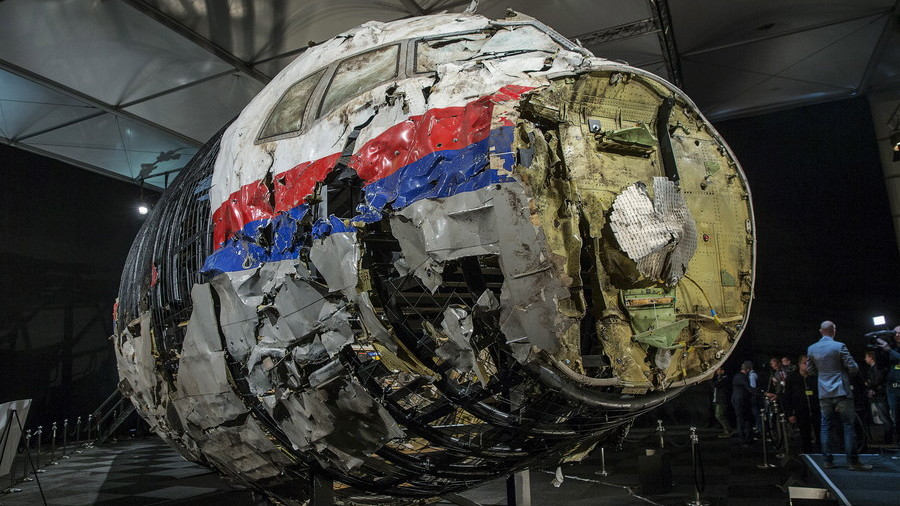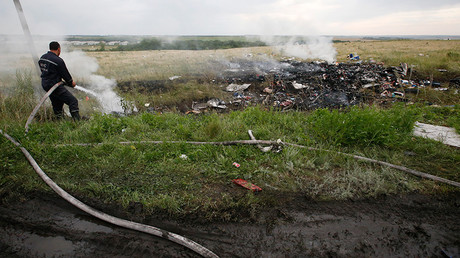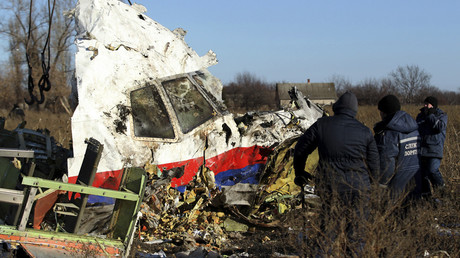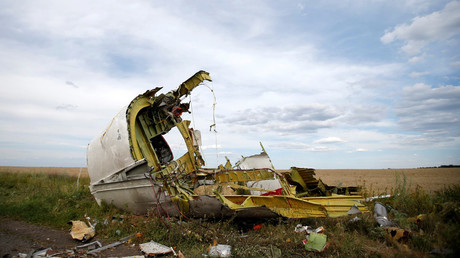MH17 shadow: Accusations against Moscow repeated, but hard evidence still missing

Once again, Russia has been accused of downing Malaysia Airlines Flight MH17 – this time by the former Australian Prime Minister Tony Abbott. The fresh claim has a local political point, but no solid evidence.
"For too long, the Russians have been getting away with murder,” Abbott told 2GB radio on Wednesday, calling the crash “an atrocity.” His rant came in response to the words of the New Zealand Foreign Minister Winston Peters.
On Saturday, Peters was confronted over his effort to negotiate a free trade deal with members of the Russia-led trade block. TV3's The Nation host Lisa Owen asked him whether he was concerned with the downing of Malaysian Airlines flight MH17. In response, the minister said that the facts, which could substantiate accusations against Moscow, are actually lacking, and the West only has “allegations.”
In late February, the Dutch Ministry of Justice and Security released another report on the state of the ongoing MH17 crash investigation, which was conducted by the Joint Investigation Team (JIT), consisting of multinational specialists. The document did not provide any new details on the inquiry, instead, it stated that the probe had been “extended until January 1, 2019.”
The “detectives” still remain in the JIT “field office” in Ukraine’s capital of Kiev, where they continue to work “on the daily basis,” the document said. The investigators are also collecting the remains of the crash victims, more than three years after the tragedy. The paper also stated that some “bone fragments” obtained by a “freelance journalist” were handed over to the investigators over the past six months.
In January 2017, two Dutch journalists traveled to eastern Ukraine and one of them also visited the MH17 crash site only to discover that “a lot of pieces,” including some human remains, were indeed still lying on the ground, with no one apparently planning to collect them. Both journalists were apprehended by authorities upon their return, despite showing a willingness to cooperate. All of the collected materials were seized.
In addition, radar data provided by the Russian aviation authority, Rosaviatsia, from as early as Autumn 2016, has long been neglected by the Dutch authorities. The initial claim was that they were unable to decipher the data. The February report finally acknowledged that a group of experts appointed by a Dutch judge reviewed the data provided by Russia.
However, the report mentions no details of the conclusions made by the experts on the basis of this analysis. It says only that the analysis results were presented to the Dutch Public Prosecutor’s Office, adding that its public disclosure is inconsistent with the interests of the investigation.
In its closing statement, the February report says that the investigation would remain “a matter of a long period of time.” It did not stop Dutch authorities from starting preparations for a criminal trial, even though the perpetrators have yet to be named. The report says that the court hearings on the MH17 case are likely to be held in The Hague.
The investigation has raised questions from Moscow due to the lack of tangible results, as well as the fact that the conclusions, to which the investigators have come so far, were disputable at best. In 2015, the Dutch Safety Board (DSB) said that the Malaysia Airlines Boeing 777 was hit by a mid-range missile launched from a Buk air defense system. A year later, the JIT said the plane was shot down by rebels in eastern Ukraine, using a Buk missile system “brought from Russia.”
In 2016, a real-time experiment staged by the Buk manufacturer, the Russian Almaz-Antey company, provided different results. The test showed that the missile, which was claimed to have brought the plane down, is no longer in use with the Russian military.
The DSB 2015 report said that pre-formed fragments that hit the plane were solid, cube and bow-tie shaped. The last missile of this type was produced in the Soviet Union in 1986, and its lifespan is 25 years including all prolongations. All missiles of this type were decommissioned from the Russian Army in 2011, Almaz-Antey said. The Ukrainian forces, however, still use them.
Based on the angle of the damage to MH17, the BUK producer established that the most probable location that the missile was fired from was Kiev-controlled territory. A missile launched from the territory controlled by anti-government forces would not inflict the damage that the lane received, it added.
The JIT investigators disregarded this evidence and opted to use a “similar” US-made missile to model the impact, though Almaz-Antey insisted it differs significantly from the Buk in critical features. The investigators also consistently limited Moscow’s opportunities to contribute to the fact-finding effort. At the same time, they have been actively cooperating with Ukrainian authorities.
Flight MH17 crashed in July 2014 in eastern Ukraine amid hostilities between Ukrainian troops and anti-government paramilitary forces that rejected the Western-backed coup in Kiev earlier that year. The tragedy killed all 298 people on board. Western media immediately pinned the blame for the tragedy on the rebels and, ultimately, on Russia.




0 Comments:
Post a Comment
Subscribe to Post Comments [Atom]
<< Home